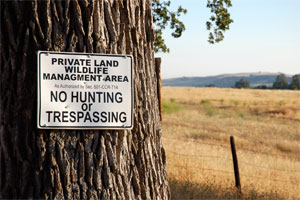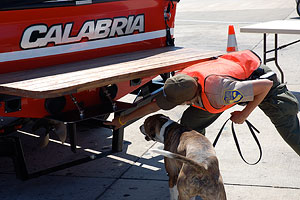 I knew I was in trouble when I saw the jars. Big jars, filled with tinted liquid, with weird things suspended in them. Things that definitely used to be alive, and that I would not have wanted to see when they WERE alive.
I knew I was in trouble when I saw the jars. Big jars, filled with tinted liquid, with weird things suspended in them. Things that definitely used to be alive, and that I would not have wanted to see when they WERE alive.
"One of my favorites is this one here," says my host, Senior Wildlife Forensic Specialist Jeff Rodzen, "we have a bird who choked to death on the head of a lizard." Hmm. A favorite? Maybe compared to the others lining the wall: jars filled with parasitic worms, a tule elk fetus, a see-through rabbit where you can see every bone.
Add in the bighorn sheep skull among the modern equipment, and the paws sticking up in the back of the evidence and it made for a surreal day of reporting.
Welcome to the autopsy and necropsy room at the California Fish and Game office in Rancho Cordova, about 12 miles east of Sacramento. This is the place where blood and hair and small fibers from wildlife crime scenes are DNA-matched for all the poaching cases in California.
This is a fascinating place, if a little macabre. And it was the starting point for a QUEST radio story that had many more story lines than I could possibly pursue in one feature.
- I learned about a canine program designed to track down poachers, and an offshoot of that program that actually sniffs out invasive species like Quagga mussels.
- I found out how dangerous the job of Game Warden actually is, and the reasons it’s so hard to recruit new officers.
- And I found out how complicated poaching can become, and how endemic it is in California.
- I discovered there’s a subculture of poaching.
Some poachers hit the country backroads late at night, right after the bars close, and Game Warden Todd Tognazzini said those are the easier ones to catch. But the ones who are good at it use sophisticated communications equipment, night-vision sights on their guns, and small, strong flashlights to stun wild pigs or deer into standing still. This is called "spotlighting." Some poachers will black out their brake lights, run on roads without headlights, and use other ingenious ways to keep a low profile while they illegally hunt wild animals.

